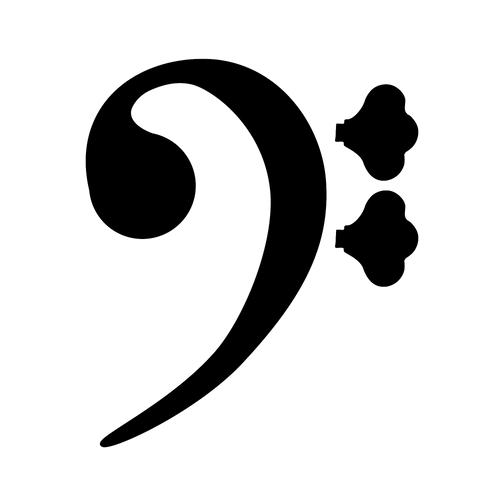The term " Brazilwood" doesn't refer to one specific tree. Instead, it describes a family of related woods from the same region, all sharing similar characteristics that make them useful for bow making. Understanding what Brazilwood bows offer, and where they fit in the hierarchy of bow materials could help you make better decisions about your next bow purchase.
Let me walk you through what I've learned over the years about these bows.
The Story Behind “Brazilwood”
Portuguese explorers discovered these trees along the South American coast centuries ago. The wood produced a valuable red dye, so they called it "pau brasil," which loosely translates to "red wood." That name stuck, and eventually the entire country took its name from these trees.
The Pernambuco, which you've probably heard of as the premium bow wood, comes from the same tree family. This connection between Brazilwood and Pernambuco confuses a lot of players, so let me clarify how they're related.
How Brazilwood Relates to Pernambuco
Think of a tree like a target with rings. Each year the tree grows, it adds more wood to itself on the outside, underneath the bark. The center of the tree, the heartwood, grows slowly and densely over many years. The outer portion, called sapwood, grows faster and has a less dense structure.
When bow makers source wood from these Brazilian trees, they make a distinction. The dense heartwood with tighter grain becomes "Pernambuco." The outer sapwood with looser grain becomes "Brazilwood." Both come from the same species of tree, but they have different physical properties that affect how they perform as bows.
On the TalkBass forums, it was discussed how to tell them apart. The Pernambuco typically has tighter, more visible grain patterns. The wood often appears more orange-brown or red-brown in color. The Brazilwood tends to have less pronounced grain and appears as a duller, medium brown.
The density difference matters for bow performance. The Pernambuco's tighter structure gives it better spring and responsiveness. It holds its camber (that gentle curve in the stick) more reliably over time. The Brazilwood, being less dense, might feel slightly heavier or less lively at the tip.
But here's the thing that surprises people: a well-made Brazilwood bow could easily outperform a poorly made Pernambuco bow. The craftsmanship and overall construction matter as much as the wood selection itself.
What You Get With a Brazilwood Double Bass Bow
The characteristics you might expect from a good Brazilwood bow include decent balance, reasonable responsiveness, and enough flexibility to handle standard bow techniques. The stick should have straight grain and good structural integrity. The quality Brazilwood bows often feature ebony frogs, proper lining (either half-lined or fully-lined depending on the model), and genuine horsehair.
Weight tends to run around 135-140 grams for a French bow, slightly more for German style. The balance point matters more than the absolute weight, and good Brazilwood bows should feel comfortable in your hand without excessive tip heaviness. The sound you get from Brazilwood could be described as warm and woody, though perhaps not as complex or nuanced as what you'd hear from premium Pernambuco.
How to Choose a Good Brazilwood Bow
Not all Brazilwood bows are created equal. The quality range within this category spans widely, from barely functional to surprisingly excellent. Finding a well-crafted bow requires paying attention to specific details that separate good construction from mediocre work.
Look for octagonal sticks rather than round ones when possible. The octagonal shape adds stiffness without extra weight, which generally translates to better performance. Check that the stick has straight grain running the length of the bow. Irregular grain patterns might indicate weaker wood that could warp later.
Examine the frog construction. Better Brazilwood bows feature ebony frogs with proper lining, either half-lined (metal lining on the top surface) or fully-lined (metal lining plus a heel plate). The lining helps the frog glide smoothly along the stick when you adjust the tension.
Pay attention to balance. Hold the bow in playing position and notice where the weight seems concentrated. A bow that feels tip-heavy will fatigue your hand and make certain techniques more difficult. The balance point should feel natural and comfortable.
Test the stick's flexibility. Gently flex the bow (be careful not to apply too much force) and see how it springs back. A good wood should have resilient flexibility, not mushiness or excessive stiffness.
A New Option of Brazilwood Double Bass Bow
I recently developed the Cobra bow line specifically for players who want quality Brazilwood construction. These bows are handmade by Michael Zhang, a skilled maker I trust to deliver the kind of performance that advancing players need.
The Cobra bows use carefully selected Brazilwood that offers strong flexibility, good sound quality, and reliable balance. The wood has that warm, natural feel that responds well to different playing styles and techniques. Because Brazilwood is more widely available than endangered pernambuco, these bows provide an affordable option without sacrificing playability or tone.
I designed these bows with specific weight ranges and balance points that work well for serious practice and performance. The Cobra French Bow weighs 130-140 grams with a balance point at 24cm, while the Cobra German Bow sits in the same weight range with the balance point at 27cm. These specifications came from years of testing what feels comfortable and responsive in actual playing situations.
The durability of these bows makes them well-suited for regular use. They hold their shape and performance over time, which matters when you're investing in equipment you plan to use for years.
You can explore both the Cobra French Double Bass Bow and the Cobra German Double Bass Bow to see which style suits your playing better. They both offer the same quality construction and thoughtful design, just in different grip styles to match your preference.

